What is the most popular miniature scale for tabletop wargames, RPGs, or even model trains? The exact scale of a model varies widely depending on who is making it and what purpose it will serve. There are also quite a few nuances to understanding how manufacturer’s scale their products to sizes in real-life (or fantasy). For those who enjoy painting miniatures or working with scale model kits, it’s useful to understand the standard scales of model making. Moreover, for those building replicas or trying to immerse themselves in the world of a miniature, it’s useful to understand the actual size of these models in real life.
For those who play miniature games and are looking for a scale reference, I’ve compiled this list of scales for you. You can use this reference guide as a way to convert miniature gaming scales into other hobby scales, such as those commonly used in model trains, railroads, or other collectible kits.
My Experience with Miniature Gaming and Modeling
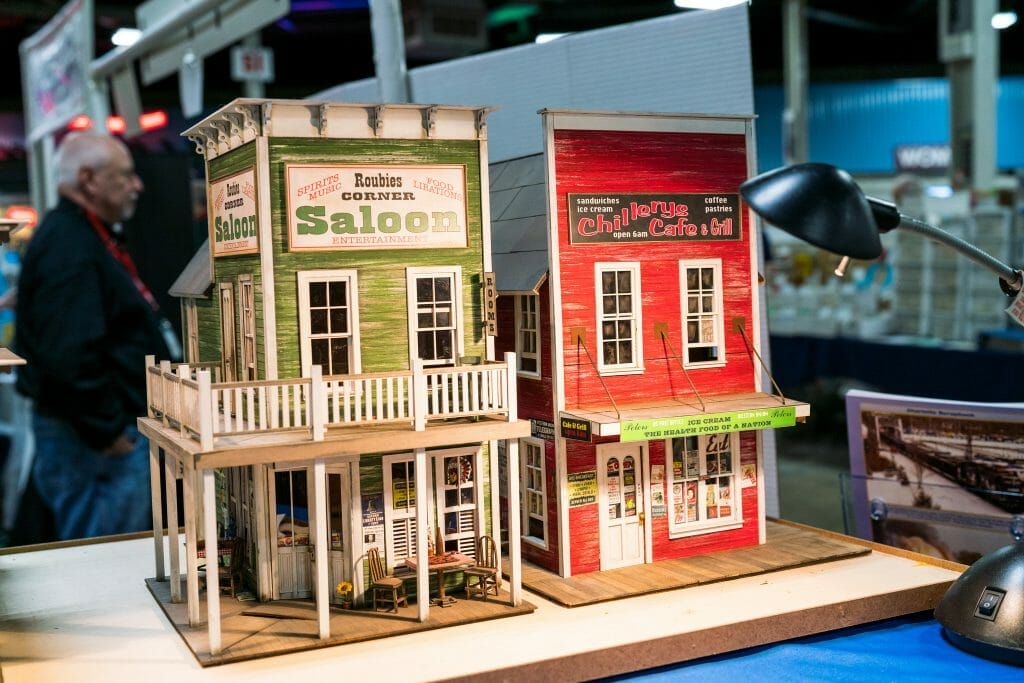
I know from experience in miniature gaming that Warhammer 40k, Bolt Action, Warmachine/Hordes, and Infinity fall into the “28-35mm scale”. In this case, then you might want to look at S-scale or O-scale model railroad kits for additional terrain and accessories. Or, if you’re into Dropzone Commander, a 10mm scaled game, then N-scale model railroad kits might be the right way to go.
Are you a miniature hobbyist? See here for another article about the magnifying visors I use and recommend for seeing the finer details.
Model buildings for railroad layouts (or gaming) come in a variety of sizes and scales. There are many websites and manufacturers that produce these structures. However, it can be difficult to find exactly what you want, or what will fit your scale without significant modification. To help you find the “best” miniature scale for your needs, check out the conversion list of modeling and miniature scales below.
Further below you’ll find a brief guide about miniature scales and how they differ or share similarities across gaming, modeling, and hobby genres.

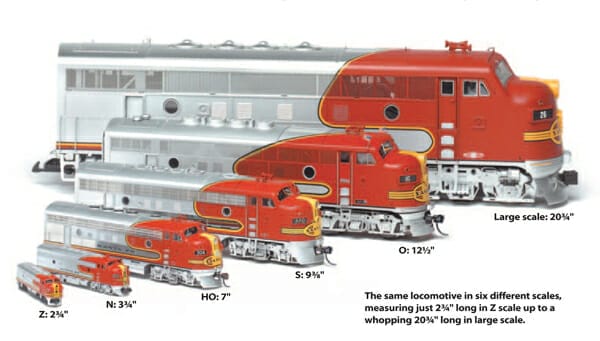

Mix and match, search on eBay. With the scaled reference below, I hope this helps provide you with new opportunities for your hobby!
List of Scales for Miniature Gaming and Modeling
1:9150 – The ultra small, micro scale. This is the scale used by Dropfleet Commander.
1:3000 – This is a very small micro-scale. This is mostly-used by naval or spaceship war gamers. Most capital ships will be short between 1-2 inches long.
1:2000 – A general naval war game scale
1:1200 – This is the scale used for Age of Sail and other similar historical naval warfare miniature games.
1:600 (2mm) – This is a micro scale found in land-sea miniature wargames
1:300 (6mm) – For miniature land battles of an “epic” scale, this is the most popular.
1:285 (6.5mm) – This is a less popular micro scale that originated with earlier plastic model kits.
1:220 (9mm) Z-scale – This is an emerging popular model railroad scale for really small trains and scenery. Some kits in this scale can be used in 10mm scale war games (and vice versa).
Small Miniatures (e.g., epic scale wargaming – tiny trains)
1:200 (10mm) – This is 1:185 scale, but for hobbyists this is similar to the 1:200 scale, or 10mm. Interestingly, this is the scale for Dropzone Commander, for example.
1:185 (10mm) – Essentially, this is the same as 1:200.
1:160 (12mm) N-scale – This the 2nd most popular scale for model railroads. It allows train collectors and hobbyist a lot of room for larger, affordable layouts with tracks and scenery. If I were to start a model railroad in an apartment or small bedroom, this would be the scale I would prefer to use.
1:144 (13mm) – This is a collector’s scale for die-cast models in Asia. Less popular in wargaming and model railroad communities. Could be compatible with N-scale and 15mm scale (below).
1:120 (15mm) – The most popular scale for wargaming in Europe. 15mm allows large scale battles with great model detail and battlefield layouts. Historical wargaming uses this scale a lot. For example, see Carnage and Glory. Railway model collectors and hobbyists can use 15mm wargame buildings, as they are similar to N-scale.
1:100 (18mm) TT-scale – A lot of 15mm scale miniatures may be over-scaled to 18mm (despite the smaller branding).
1:96 (19mm) – A less popular scale in more modern times. This used to be scale found in many Japanese plastic kits (science fiction and fictional characters from books, graphic novels/manga).
1:93 (20mm) – This scale is hard-to-find scale today. 20mm used to be the scale found in many of war games in the 80’s and 90’s. Many 20th century themed war games, e.g., World War 2, used this scale. The details and quality of some of these miniatures rivaled larger scales that are more prevalent today.
Standard Miniatures (e.g., tabletop designer games, popular model train scales)
1:87 (21mm) HO-scale – This is the most popular model railroad scale, comprising close to 50% of the train hobbyist market. All major model railroad companies produce and support the HO scale. This scale is similar to OO in some European countries (see below).
1:77 (24mm) OO-scale – Similar to HO, this is another very popular scale for model railroads. Both HO and OO scale products can match the 25mm scale used in miniatures war games (and the other way, too).
1:72 (25mm) – This is the starting scale of all modern model scales. When scale miniature wargaming grew, it started here. However, as “heroic” scale and over-scaling occurred from the likes of Games Workshop and Ral Partha during the 70’s and 80’s, the 25mm scale gave way to the larger 28mm scale. Reaper miniatures, which are popular among the roleplaying game (RPG) crowd, are in the 25mm heroic scale. The wargaming industry has never been the same as this over-scaling trend (aka scale creep) happened through the late 20th century.
1:66 (28mm) – This is the “standard” scale for some of the largest designers and manufacturer’s for miniature tabletop games today. This scale was originally the domain of Games Workshop/Citadel, which precluded earlier manufacturer’s from substituting the GW product line. The 3mm scale difference from the 25mm standard of yesteryear has all but vanished as modern miniature wargaming companies from across the industry “scaled up” to meet the growing demand for “heroic/over-scaled 25mm”.
1:64 (29mm) S-scale – This is a somewhat rare railroad modeling scale (as compared with O, HO or N-scale. This is the closest scale to the 28mm miniature war game standard 28mm, e.g., Games Workshop and others. Terrain and structure kits in this S-scale model railroad market can be used to substitute for 28mm scale war games very well.
Large Miniatures (e.g., Toy-like, highly-detailed modeling, hobbyist dream, collectibles)
1:48 (39mm) O-scale – When you think of toy trains (e.g., Lionel), this is the scale you might see most. This is a classic model rail road scale, but has no real equivalent in modern wargaming. There are a lot of products in the model railroad hobby for the O-scale.
1:34 (54mm) – This is a classic scale for larger metal miniatures from a by-gone era. British “toy soldiers” might be seen in this scale.
1:32 (58mm) – This might the scale you might see plastic toy green armies and soldiers.
1:22.5 (80mm) G-scale – If I had a million dollars and a large backyard, this is the modeling scale I would choose. Have you seen a model train in a garden? G-scale is the garden railroad scale.
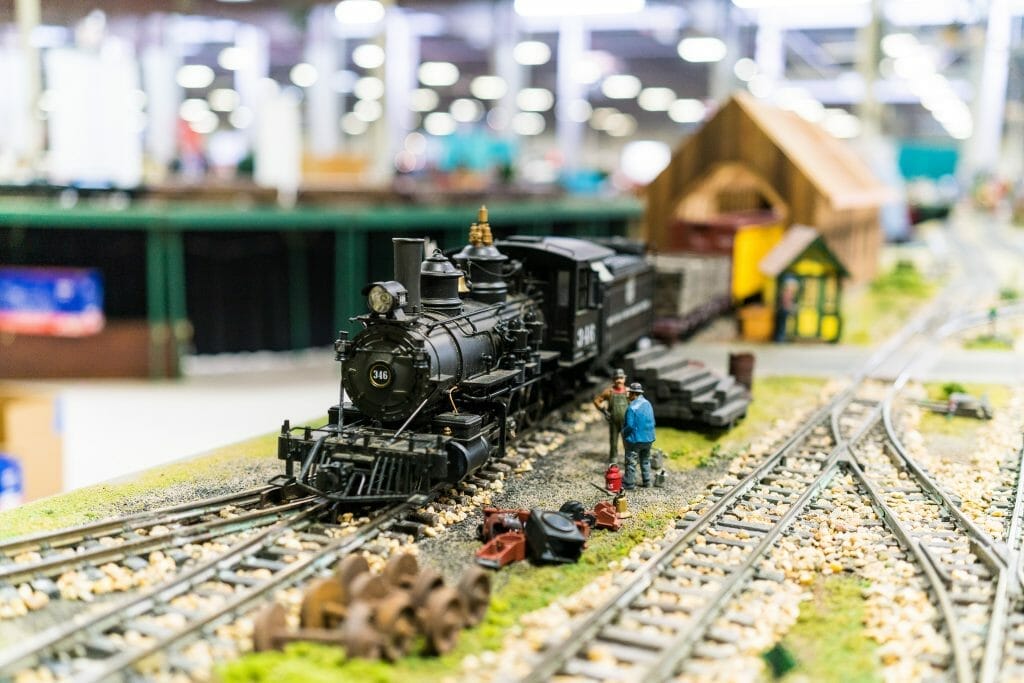
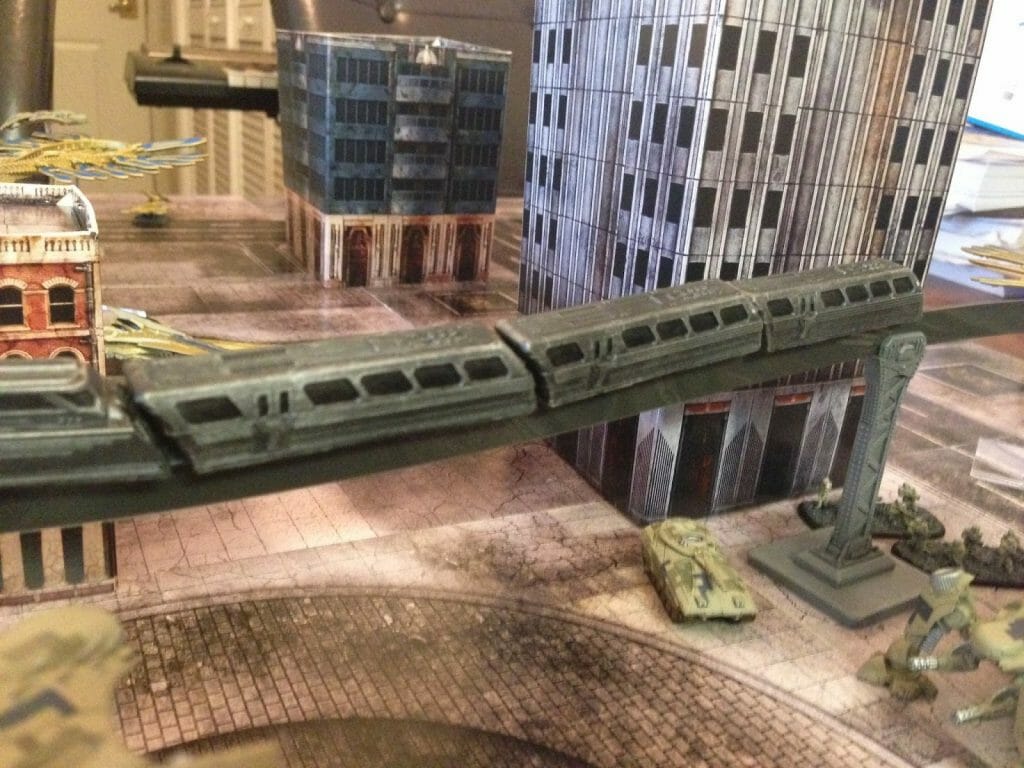

Quick Guide About Miniature Model Scales
There are many miniature scales used for many different hobby activities. Games using large amounts or miniatures generally utilize small sizes while those using fewer miniatures will tend to use bigger sizes. Games like “Conquest The Last Argument of Kings” uses a larger scale (35mm) than Dropzone Commander (DZC) (10mm). The latter DZC requires many models to represent the ongoing tabletop conflict, using urban buildings and other clustered terrain features, and thus operates with a much smaller scale.
One of the most popular miniature scales is 28mm, which is used in many tabletop wargames and roleplaying games, e.g., Warhammer 40k and Dungeons and Dragons (or DnD). This scale is often chosen because it allows for reasonable detail while still allowing players to move around quickly on a table.
To learn more about miniature scales, check out this simple primer below.
Model object proportions differ across manufacturer based on aesthetic and style
Not all miniature models appear the same even within the same scale. A figure scale involves more than just a simple conversion of size. The proportions within a model line from a company depend a lot on the purpose of those models. Collectible miniatures, for example, for history-buffs and military simulation wargamers may use accurate scale replicas.
On the other hand, depending on the use of the miniature, the proportions are sometimes adjusted to make the miniature feel heroic, child-like, or hyper-realistic. These results mainly result from manufacturers choice in terms of style, accessory and proportion.
Of course, this can sometimes lead to problems even on the same scale, as combining humans intended for heroic looks with people intended for realistic looks makes them significantly larger in comparison to one another. There must be an understanding of the proportions that exist in existing models and matching them with new models.
It is also a result of the artistic liberties taken by the individual sculptors. Consequently, it is not always possible for a buyer of miniatures to find an exact scale match for their miniature. However, the good news is that there are ways to find close enough alternatives.
What is absolute and relative scale in miniatures?
One way to describe the scale of a miniature model is by using absolute or relative scales. Absolute scale refers to an exact size ratio between objects in a miniature, with numbers such as 1:24 or 1:100 denoting specific ratios.
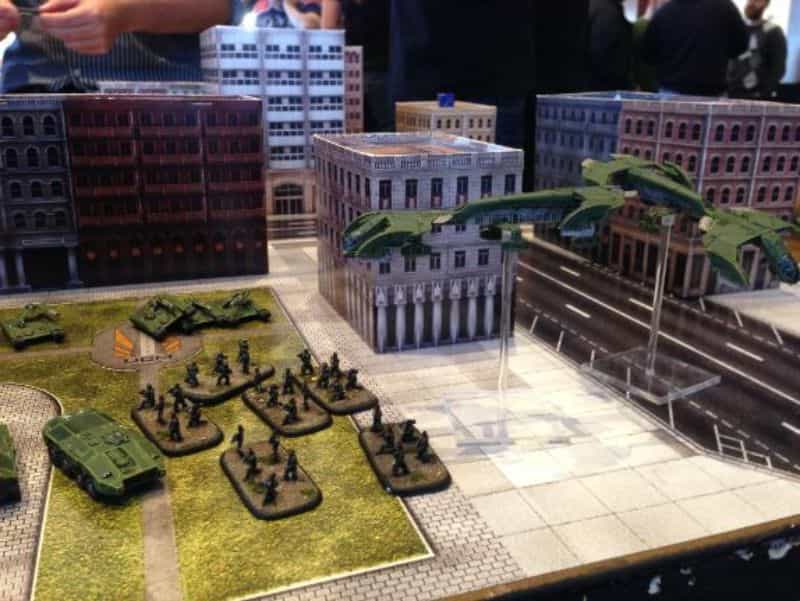
Relative scale, on the other hand, refers to the size relationship between different objects in a miniature. For example, a relative scale of 1:24 means that one object in the miniature is 24 times bigger than another object.
Both absolute and relative scales are useful for understanding and working with miniatures, but they can be a bit confusing at first. When combining models from different manufacturers, it’s important to understand the differences in absolute and relative scale to ensure that all of your miniatures fit together correctly.
Is it okay to use different scales within a wargame or tabletop display?
Yes! Some hobbyists choose an alternate size to their counterparts because they like using the miniatures to represent more depth. As an example, a wargamer might use a 15mm miniature to represent a tank while using a 24mm scale miniature to represent their infantry. This gives the player an easier time “seeing” their battlefield from a tactical perspective.
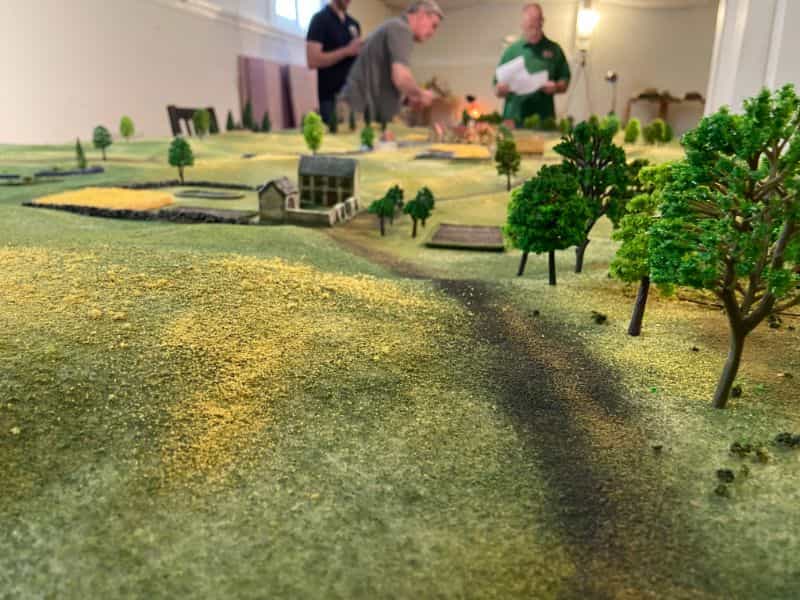
For those building dioramas, using different modeling scales allows a crafter to use “forced perspective”. This is a technique that allows the scale of objects to appear larger or smaller than reality. For example, in a display you may place smaller scale models in the back, while using larger scale models in the front. This trick of the eye makes it appear as if all the models are the same size, when in reality they’re not.
Using forced perspective has been used for decades in film and photography for many special effects, creating the illusion of depth within an image or video.
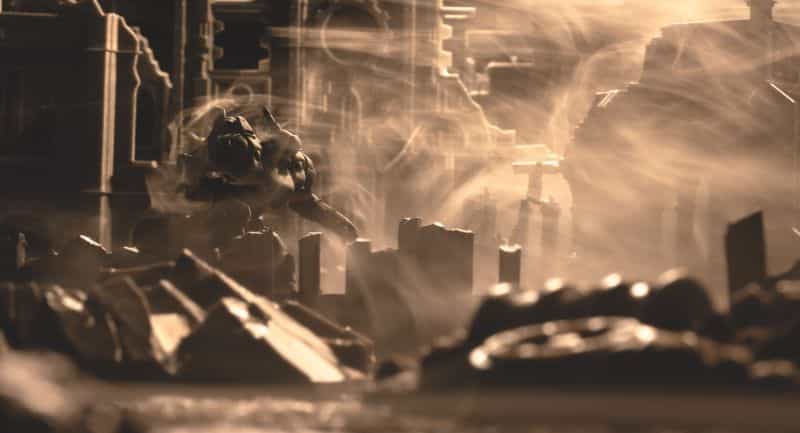
When working with miniatures and wargaming, this technique can be a great way to create more realistic-looking models. However, it is helpful to understand the differences between absolute and relative scale in order to successfully combine models that are from different manufacturers or even different scales.
Popular wargamers use the “heroic scale”, but what does that mean?
Heroic scale is a term used to describe miniature models that have been intentionally made to be larger than life in order to achieve an exaggerated, heroic look. This style of modeling has become popular among wargamers, who use these larger-than-life miniatures on their battlefields for added visual appeal and dramatic effect.
While the term “heroic scale” is often used to describe models that are 30mm or greater in size, any model that is proportionally larger than its real-life counterpart can be considered heroic scale.
I’ll note that heroic scale models are often easier to paint. The surfaces of major elements on a heroic scale model are larger with deeper texture features. This can make them easier to hand-paint. So, if you’re just getting started with modeling, or want to create a wargame that looks more dynamic, choosing models in heroic scale may be the best option for you.
Hint: Most popular tabletop wargames, e.g., Games Workshop, Privateer Press, Para Bellum Games, already offer heroic scale models as part of their collections because of their ease of painting and immediate visual appeal.
Have you ever walked into a game store and seen a display at a distance? Heroic scale models are usually what you’re seeing.
How do you find the right scale for your project?
The first step is identifying what sort of project you’re working on. Are you building a warband for a skirmish game? Or are you constructing an army for a large-scale wargame? Perhaps you’re just looking for a few models to add to a display diorama.
For wargamers, the main model collections are already sold in the same scale. For example, if you’re building an army for a large-scale wargame, such as Warhammer 40,000, you’re already at an advantage (or disadvantage) because all of the models are built to a particular scale and aesethetic.
It is when you want to substitute your miniatures, e.g., proxy, or build DIY terrain features for your battlefield tabletop that you’ll need to be aware of scale variances. More about this below.
How are miniatures measured?
Miniatures can be measured according to height, width, depth, or some other parameters. In general, most miniature scales are measured in millimeters (mm), with the scale being a ratio of the model’s size to its real-world counterpart.
For example, a model that is 12mm tall would be considered 1/144th scale, because there are 144 millimeters in a foot (12 inches). Similarly, a model that is 30mm tall would be 1/72nd scale, since there are 72 millimeters in a foot.
To make it easier to work with different scales, many wargamers will refer to their models by size, e.g., 60mm tall miniatures versus 40mm tall miniatures. This can be helpful when you’re working with multiple manufacturers or building your own terrain and dioramas.
You can use the scale reference above to help you gauge variances in scales across manufacturer’s and company brands. Mix and match!
Scale of Games Workshop Warhammer models?
The scale of the Warhammer has changed with the game’s history. Earlier Warhammer models had been built to 28 mm scale and new models are typically around 32mm. But the model itself possesses more nuances.
Warhammer miniatures are made with heroic proportions, and head, arms and many more characteristics are bigger. These parts impacted by the heroic size do not fit into other bodies and provide unique appearance. Because of the small model sizes, integrating humanoid warhammers models into another model can make for a complex project.
What are the Popular Scales for D&D Miniatures?
For D&D, the smallest scale, as determined by the size of the figures that may be used in a game (known as miniatures), is 25mm, followed by 32mm and finally 42mm.
For those looking to create immersive tabletop environments, e.g., those vast fantasy worlds where adventures happen, knowledge of miniature scales can help you find the best terrain and models for your particular game.
Dungeons and Dragons (D&D) miniatures are generally at the 25mm scale. Reapers miniatures are a popular brand of miniatures that come in the 25mm heroic scale, and therefore stand out from the table even from a distant viewing angle.
It is notable that many within the RPG gaming community agree that size and proportion of models changes over time. There is “scale creep”. And, because the miniatures change slowly, mostly because they change in proportion–due in part to individual tastes of sculptors, 3D artists, and the manufacturing process, e.g., cast/mold vs 3D printing–the tabletop RPG gaming community defines a model’s maximum size using the base (or stand) of a miniatures instead of the figurine itself.
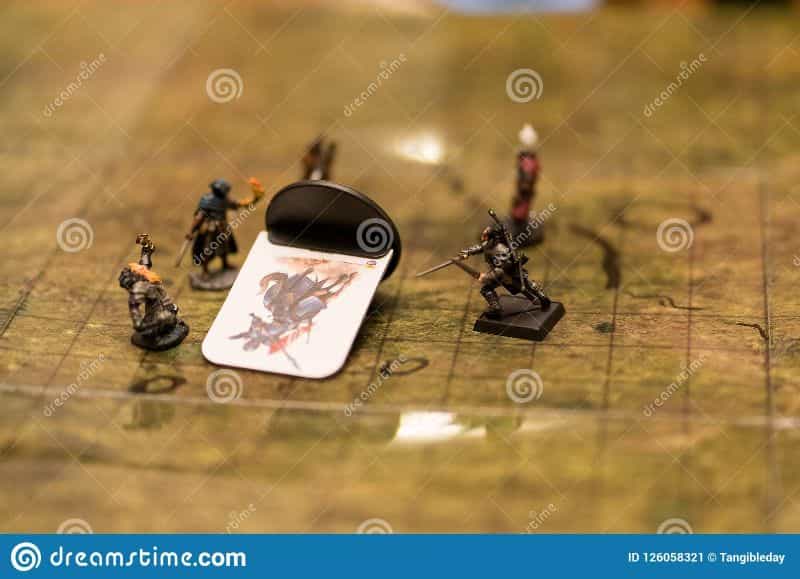
For example, a model’s base could have a scale width and length of about 1 meter (or a 3 x 3′ square). This means that the miniature itself takes up the space within the game, which would effect interactions with other objects, NPCs, or actions within the game. There can be exceptions to these, based on size in-game or other factors.
Conclusion
Do you work with miniature models and tabletop games? If so, then you know that it is essential to be aware of the different scales used by manufacturers in order to choose the right models for your projects. This article also explored some of the most common scales used in wargaming and tabletop gaming, including Warhammer 40K, Dungeons & Dragons, and others.
Whether you’re looking to proxy or build your own models and terrain, it’s important to be aware of the scale variances between manufacturers. Use the information in this article as a reference guide to help you make informed decisions about the scale of your project.
Do you have a favorite modeling or wargaming scale? Let me know in the comments!
For more articles, you can subscribe through email or follow us on Facebook or Instagram.
Thanks for visiting!




Tangible Day on YouTube (Miniatures and More!)

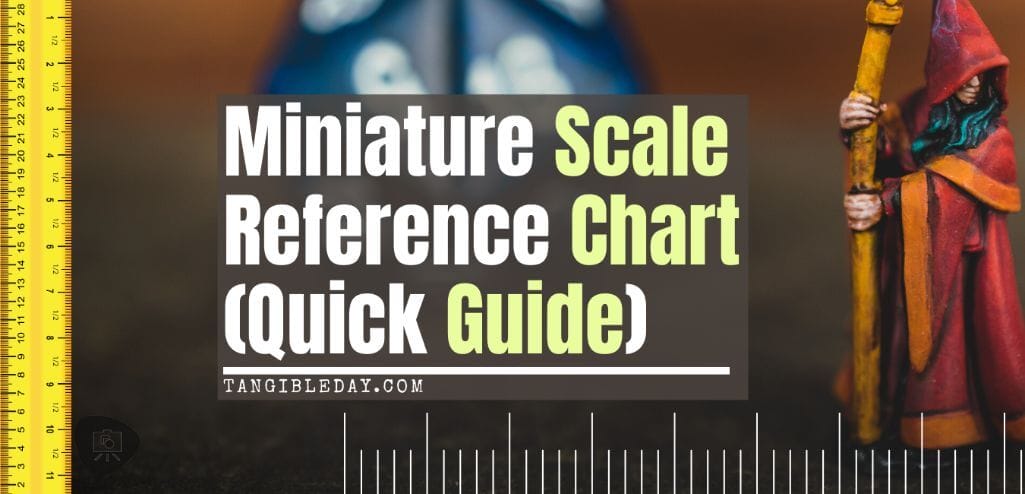
Pingback: Scale Reference (Model Rail Road and Tabletop Miniature Games) — Tangible Day | Ups and Downs of Family History V2.0
Thanks alot – this was a VERY useful reference guide
Great! I’m glad you found it useful!
Pingback: Tangible Day – Featured Blogger of the Week March 19, 2021 | Ups Downs Family History
Thanks 🙏. Very informative, nearly bought some MASSIVE items on ebay !!!! Thanks for the save!
You’re welcome! I’m glad you found it helpful!
Pingback: Miniature Scale Reference Guide (Conversions for Model Railroads and Tabletop Wargames) - Toy Newz
Just an FYI. For terms of scale compatibility, in the model kit scale range, most 25-28mm kits should be 1/56. But 1/48 scale looks right, even if it is not the correct size proportionate to the human model. I would pick 1/48 over 1/35 for 32mm as well.
Yeah, I agree actually. It also just depends on what you’re looking for. The conversions are estimates as most of the time a directly 1:1 trade-off isn’t possible. Your measures are quite close! Thanks for the note 🙂
Pingback: Scale – Wargame Campaign